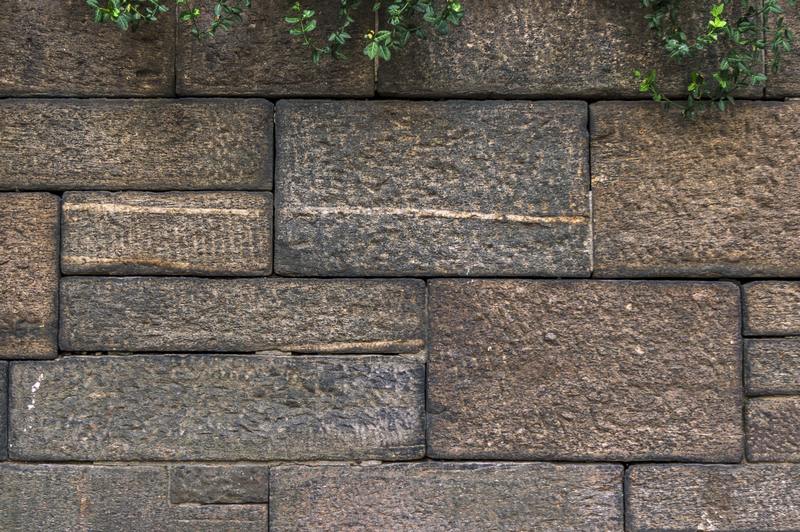You might be stuck in a dilemma of searching “how to repair water damaged concrete block wall” and looking for ways how you can finally fix it. Knowing the proper steps will help you get started on the right track.
Even though significant structural damage poses an immediate threat, more innocuous water damage indicators, such as mold development, can pose serious long-term health problems. The ability to check walls and identify the sources of water damage will help you repair and restore your concrete block wall to its original condition.

What Are The Major Causes Of Water Damaged Concrete Block Wall?
Water seepage, condensation, and flooding are all significant causes of block wall damage. A block wall’s surface layer, such as paint, plaster, or stucco, can be damaged by water, resulting in harmful mold development. The integrity of the mortar can also be jeopardized, leading to fractures or crumbling with a consequent movement of concrete blocks.
Water can cause much more damage if the temperature drops below a certain threshold. It takes 9 percent of the expansion of water to produce pressure in concrete when it freezes. Concrete blocks can expand, crack, and crumble if they are subjected to repeated freeze-thaw cycles.
How To Fix A Water Damaged Concrete Block Wall
In every era in which structures have existed, moisture has been the leading cause of structural damage. When it comes to construction materials, moisture comes in several forms: snow and ice, falling rain, wind-driven rain, and water vapor.
1. Structural
Masonry units and mortar can crack as a result of unwelcome water infiltration. Thermal expansion can occur when water penetrates brick, concrete, or natural stone, causing the surface to peel, pop out, or flake off.
A buildup of moisture in the masonry causes this phenomenon, also known as spalling, to occur. The excess moisture causes pressure to be exerted outward. In the long run, spalling can cause significant pieces of brickwork to disintegrate and fall off, potentially resulting in structural damage.
Increased moisture also leads to wall decay, which is both ugly and harmful to the health of the home’s interior. As well as the breakdown of insulation and discoloration of interior finishes, it can cause mold to grow.
Damage to wood/steel backup studs, cladding, connections, and reinforcements are among the other negative consequences of the exposure. Without treatment, the water intrusion can worsen and potentially spread, resulting in further structural degradation or a complete collapse of the building’s structure in the most severe circumstances.
2. Efflorescence
Efflorescence is a sign that water is evaporating from the surface of a block wall. Salts are left behind on the surface of a block as a scaly white deposit as water evaporates from the block’s surface.
Efflorescence appears on many new walls shortly after they are built. It is common for walls in wet environments, such as basements, to see an occurrence of efflorescence. With the use of stiff-bristled brushes, abrasion, or specialized cleansers, you can remove efflorescence from your surfaces.
In reality, cleaning is simply a temporary remedy; efflorescence will continue to develop as long as moisture permits salts to migrate to the surface of a building’s walls and ceiling. You must address waterproofing difficulties if reoccurring efflorescence is to be repaired.
3. Condensation and seepage
It is possible for concrete block walls to feel or appear damp as a result of both seepage and condensation. Sedimentation is the passage of water from one side of a wall to the other, whereas condensation accumulates water in an interior space due to high humidity levels. Similarly, although seepage can result in significant leaks or weaken the mortar that holds the concrete blocks together, condensate can cause surface damage to block walls as well as the formation of potentially hazardous mold fungi.
How do I stop water from coming through my block wall?
You can prevent pinhole water leaks in block walls by using a masonry waterproofer to fill the cracks in the blocks. A masonry waterproofer comprises silica or epoxy particles that adhere to the cinder-block surface to form a waterproof barrier that seals off the pores that allow pinhole leaks to occur.
How To Waterproof Concrete Block Wall
For concrete blocks that are always moist or wet, cut weeping holes into the bottom blocks to allow water to escape from the hollow cores and drain out into the surrounding area. On damp concrete, efflorescence (white minerals) or mold growth is common.
You can remove light efflorescence mechanically with a wire-wheel drill attachment or with a wire brush. Use a wire brush and an acid cleanser to remove stubborn efflorescence deposits.
Apply the sealer when the concrete has dried. Next is to cover the hole. Caulk, epoxy, or concrete patching compound can be used to stop weeping.
Conclusion
We hope we were able to help you know “how to repair water damaged concrete block wall”. You should know when to seek professional help to make sure you can fix it the right way.
